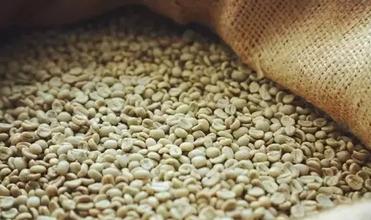How to use the two aprons at the coffee exit of Cankun coffee machine-air leakage of Cankun 1819a coffee machine
How to use the two aprons at the coffee exit of Cankun coffee machine-air leakage of Cankun 1819a coffee machine
Moreover, I can't agree that Bezzera alone 'invented' Espresso, although he was the first to try to make a commercial coffee machine under steam pressure and created the Espresso culture that is currently made in the bar and injects coffee directly into the guest cup. However, the coffee brewed by this kind of coffee machine still does not have the delicious taste of Espresso and is full of Crema. This is mainly because Bezzera's coffee machine uses the steam produced when the water boils, which forms pressure in an airtight boiler and pushes hot water into the coffee powder in the shower head. In order to make steam, the whole boiler must be heated to boiling, causing hot water near the boiling point to burn the coffee powder, lose the aromatic oil hidden in the coffee powder, and extract the doubly bitter coffee. There are two main reasons why coffee brewed on Bezzera's machine cannot form Crema:
The hot water for brewing coffee is too hot, resulting in the loss of oil.
The steam boiler cannot provide enough pressure.
Even so, exerting extra pressure to shorten the time it takes to brew coffee is still worth the effort. Just don't use steam, what should be used as a source of pressure? The further question is: how much pressure does it take to get the best extraction rate?
A brief history of coffee machine development Ⅱ
Desiderio Pavoni obtained a design patent for Bezzera in 1903, and he has been making the coffee machine since 1905. After that, Teresio Arduino began to produce similar coffee machines, and other producers followed suit. In the 1920s, coffee shops in Italy could see signs of this kind of coffee machine. But the Italians are obviously not satisfied with the results of the steam pressure coffee machine. The pressure should be increased by steam, but increasing the heat may burn the coffee powder during cooking, losing the aromatic oil hidden in the coffee powder and making it more refined.
Take out the doubly bitter coffee. Therefore, some people think: can it be directly pressurized on the hot water instead of boiling the water with steam as the pressure?
During the two world wars, people used the natural pressure of water from the faucet to increase the pressure of brewing coffee. The coffee machine uses electricity to quickly heat a small pot of water to the boiling temperature, each pot of water to make a cup of coffee, each pot connected to the faucet. As long as the operator gently press the pole on the small pot, the pressure of the faucet will push the hot water in the small pot to the coffee powder. According to the difference of water pressure in different regions, generally speaking, the pressure generated by this coffee machine is greater than the 1.5 atmospheric pressure produced by the steam pressure coffee machine. The height of this coffee machine is not too different from that of the steam pressure coffee machine, but the overall size is smaller. The appearance is more in line with the popular trend of the late 1920s and 1930s, replacing the arc of the steam pressure coffee machine with straight lines and geometric lines.
Another way to generate more pressure than 1.5 atmospheres is to use compressed air. For example, a home coffee machine in Milanes collector Ambrogio Fumagalli uses an air pump to pressurize hot water for brewing coffee (during World War II). In 1938, Francesco IIIy made the llletta' Coffee Machine, a large commercial coffee machine based on the principle of compressed air. When the crossbar on the coffee machine was lifted before World War II, water was injected into the space occupied by the piston and pressed down, and the pressure on the piston injected water evenly into the coffee powder in the filter. this means that hot water can brew coffee before it boils without scalding the coffee powder. At the same time, Achille Gaggia, the owner of a cafe in Milan, used a similar method to brew coffee. This method is gradually adopted by other coffee machine manufacturers, so this new coffee machine is also gradually replacing the steam pressure coffee machine. Today, the application of this principle can still be seen on household machines, the La Pavoni.

Important Notice :
前街咖啡 FrontStreet Coffee has moved to new addredd:
FrontStreet Coffee Address: 315,Donghua East Road,GuangZhou
Tel:020 38364473
- Prev

Degree of grinding of siphon pot-grinding degree of hand punch and siphon pot
Grinding degree of siphon pot-hand punching and siphon pot grinding degree flavor extraction + filtration is carried out at the same time, and extraction takes place around the position where water is poured into it. The more water, the more extraction. Newly roasted coffee beans will produce more carbon dioxide, these gases are not conducive to the full contact between water and coffee powder to complete the extraction, so it is necessary to stew first to avoid uneven extraction of coffee powder.
- Next

The usage of hario hand bean grinder which kind of good brand is recommended
Hario hand bean grinder thickness adjustment which kind of good brand recommendation here some friends will say, as long as it is not grinding on the line!? I bought a few dozen yuan of spiral bean grinder on Taobao and now I can OK it. In fact, as long as your beans are good enough and fresh enough, it must be much better than buying coffee powder directly to brew and extract! But you
Related
- What is the Philharmonic pressure? How to use Philharmonic pressure to make delicious coffee
- Why does a hand grinder have more fine powder than an electric grinder?
- In addition to the hot mom, what is the difference between the versions of EK43 | ditting and Mahdi ek43?
- What kind of equipment do you need to make coffee by hand? Introduction to novice starter cooking equipment tools
- Espresso needs to be ground how thick and thin scale entry Italian Coffee Machine Bean Grinder investigation and Grinding course
- How much does it cost to open a small private cafe? How much does it cost to learn coffee? How to operate it?
- The difference between the flavor characteristics of hand-brewed coffee and coffee maker is hand-brewed coffee really better than coffee maker? Can I use a coffee machine to make coffee beans by hand?
- The difference between 01 and 02 of hario v60 filter cup what is the difference between 01 and 02 filter cup opening and cooking flavor
- What's the difference between the smart cup and the French kettle? Which is better, the French kettle or the Smart Cup?
- What's the difference between a smart cup and a V60 filter cup? The difference between the taste of smart cup and hand-brewed coffee

